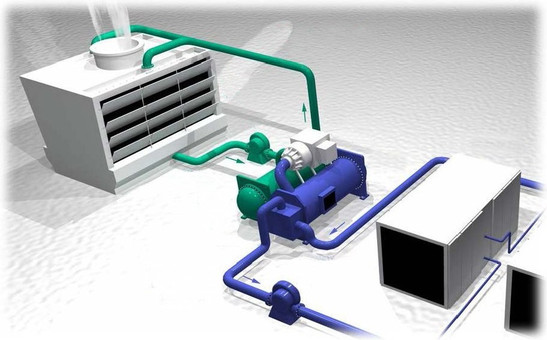Active and Passive Beam Application design Guide (GB21) By: REHVA
Active and Passive Beam Application Design Guide provide energy-efficient methods of cooling, heating, and ventilating indoor areas, especially spaces that require individual zone control and where internal moisture loads are moderate.
Guide for standards and regulations on heating, refrigeration and air-conditioning (SRB01) By: SMEITS
This guide was primarily written for engineers ? designers and contractors, to whom the starting points of HVAC&R standards and regulations are sufficient. It is not merely a reprint of standards and regulations, but a review of their starting points and essence necessary for design and contracting approach. Only in cases of some ambiguity, it is necessary to look for a source material.
Scientific-technical five-language dictionary (heating, refrigeration, air-conditioning) (SRB02) By: SMEITS
For the first time this dictionary offers a comparative review of the most needed terms from the field of heating, refrigeration, ventilation, and air-conditioning in Serbian, English, German, French, and Russian. In some languages several terms are given for some notions and, therefore, there are total 38000 terms.
Food refrigeration and freezing technology (SRB03) By: SMEITS
The basic notions of human nutrition, food ingredients, storage conditions, and storage effects on food properties are explained. Furthermore, changes of foodstuffs and consequences of such changes on quality or deterioration of food properties are described. The sanitary and hygienic working conditions are listed, according to specific requirements in the storage process and storage possibilities/options and conditions are presented in detail.
Small thermal engineering handbook (SRB49) By: SMEITS
The small thermal engineering handbook contains the tables with graphic symbols which should be used, in accordance with the adequate standard, when drawing the schemes of refrigeration plants, as well as the tables with practical data on flammability limit of some gases and vapour, approximate coefficients of heat transfer depending on convection types and similar. A special attention is paid to the chapter on refrigerants ? the field of great significance for development of thermal engineering equipment and systems, in which important changes have occurred regarding conventionally used refrigerants.
Heating network boiler rooms and heat exchange stations (SRB41) By: SMEITS
A handbook for designers and contractors. In addition to theoretical considerations, the book deals with a series of calculations, recommendations, and useful diagrams and nomograms. In this attractive handbook a reader can find a large number of necessary data proven in practice, with detailed information on the characteristics of selected and reliable technical solutions.
Regulation valves in district heating systems (SRB06) By: SMEITS
Valves are devices that can change the flow of a fluid in a pipeline and, when needed, the flow can be completely stopped by closing a valve.
Drum heat exchangers (SRB07) By: SMEITS
The book applies the principle of individual and integral analysis of factors influencing the heat exchange process: apparatus geometry and flowrate configuration, effective temperature differences and heat transfer coefficient. By connecting the influential factors we can obtain equations that connect thermal and geometrical values of the apparatus.

